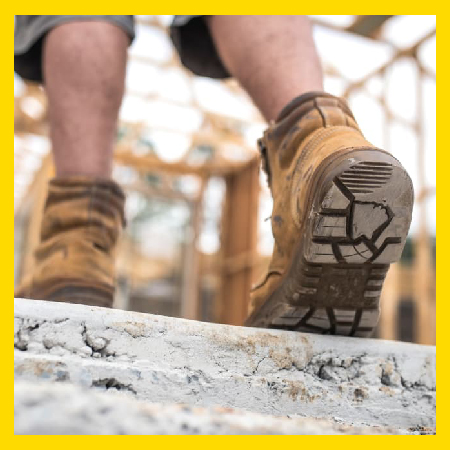Currency
December 20, 2018


According to the National Council on Compensation Insurance, the average cost of a lost work day from a foot injury is $9,600. Eighty percent of all footwear injuries are caused by an object weighing no more than 30 pounds impacting the foot. The foot injury can cause temporary to permanent immobility for the worker, depending on the severity of the injury. As the workers have to move around the workplace the possibility for foot injury increases. Appropriate risk assessment for the workplace foot injury, selection of effective footwear, proper supervision, and enforcing the wearing of adequate worker foot protection would mitigate the impacts of foot injuries on workers and companies.
Foot anatomy and injury
The human foot is a mechanical structure composed of bones, joints, muscles, tendons and ligaments. The primary joints in the foot are the ankle, subtalar joint and joint between toes. The foot can be subdivided into the hind foot, the mid foot, and the forefoot. The hindfoot is composed of ankle bone and heel bone. The irregular bones of the mid foot, the cuboid, navicular, and three cuneiform bones form the arches of the foot, which serves as a shock absorber. The mid foot is connected to the hind- and fore-foot by muscles and the plantar fascia. The forefoot is composed of five toes and the corresponding five proximal long bones forming the metatarsus. Similar to the fingers of the hand, the bones of the toes are called phalanges and the big toe has two phalanges while the other four toes have three phalanges each. The joints between the phalanges are called interphalangeal; those between the metatarsus and phalanges are called metatarsophalangeal (MTP).
The most common types of foot injuries observed in the workplace are broken bones, puncture wounds, amputation, sprains, burns, lacerations, hypothermia and electrical shocks.
In general, the following are some of the workplace or work related factors that have the potential to cause foot injuries:
The other common causes for foot injuries are as follows: feet trapped between objects or caught in cracks, heavy objects falling on the feet while stacking, moving vehicles – especially when reversing without a banksman – workers using conveyor belts may end up with crushed or broken feet, even requiring amputations of the toes or feet. The presence of sharp metals in engineering or fabrication workshops can result in punctures to the sole of the foot. Working near unguarded machinery such as chainsaws and strimmers may lead to cuts or lacerations. In addition to this, molten metal splashes, contact with fire, and flammable or explosive atmospheres result in severe burns. Contact with sources of electricity including damaged live electric cables may result in electric burns. Incorrect footwear and poor lighting in the workplace can also lead to twisted ankles and fractured or broken bones because of slips, trips and falls.









